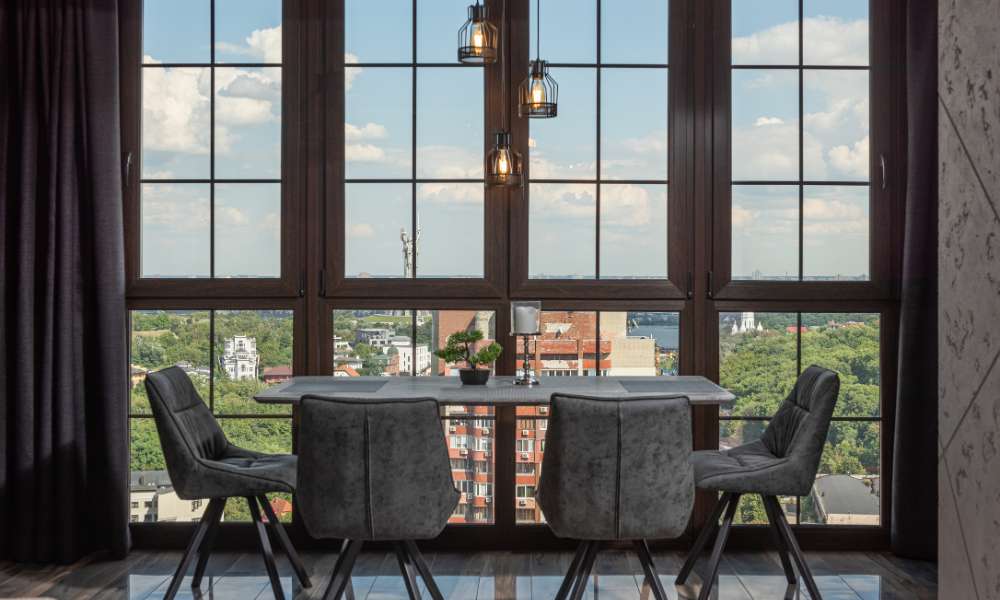The eating table isn’t always simply a piece of fixtures—it is the nucleus of a home where memories are shared, and connections are deepened. However, the essence of a delightful dining enjoy can be subtly motivated by means of the space that surrounds this imperative characteristic. It’s no longer pretty much making room for chairs; it is approximately crafting an environment in which every guest feels at ease. The proper spacing doesn’t simply enhance the room’s capability; it breathes consolation into the very act of dining, making every meal an occasion to recall. Understanding the way to allocate space around your dining table is prime to creating a setting this is both inviting and supremely sensible.
Understanding the Importance of Space Around a Dining Table
The space encircling a eating table is more than simply an afterthought—it is a essential aspect of the eating enjoy itself. A properly-spaced desk area invites smooth movement, allowing chairs to go with the flow resultseasily and conversations to drift with out the stifling feel of being boxed in. When the spacing is right, the eating region transforms into a haven of openness and rest. The room breathes easier, feels extra spacious, or even the maximum lavish eating set exudes a experience of welcome in place of overwhelming presence. This sensitive stability of space and comfort guarantees that the dining revel in remains joyful and unhurried.
Why Space Matters for Comfort and Functionality
Comfort at the dining table isn’t just a luxury—it’s a necessity. Nobody enjoys a meal when they’re wedged between furniture or constantly bumping into the person next to them. Functionality goes hand in hand with this comfort; after all, what good is a beautifully set table if you can’t move around it with ease? Sufficient space ensures that guests can navigate the area smoothly, enhancing the dining experience from start to finish. Conversely, when space is limited, dining becomes a chore—awkward, uncomfortable, and far from enjoyable. The right amount of space not only boosts comfort but also integrates the dining area seamlessly into the home’s overall design, making it a harmonious extension of the living space.
General Guidelines for Spacing Around a Dining Table
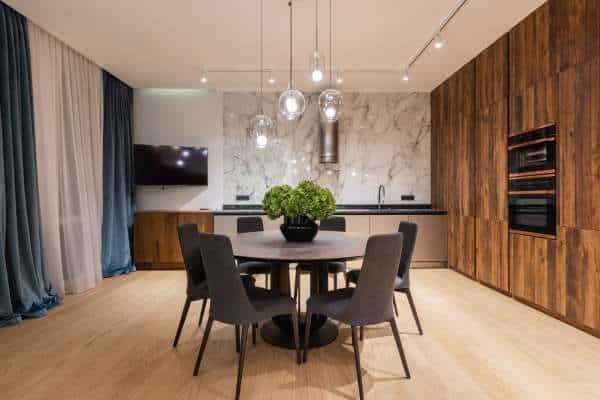
When laying out your dining area, a general rule of thumb is to leave at least 36 inches between the edge of the table and any surrounding walls or furniture. This spacing isn’t just about fitting chairs; it’s about creating an environment where movement feels natural, and space isn’t a limiting factor. In larger rooms, extending this distance to 42 or even 48 inches can elevate the experience further, allowing for greater freedom and a more luxurious feel. Of course, these guidelines aren’t set in stone—they can be adjusted depending on the size of your room and how many people you expect to host regularly.
Calculating the Ideal Space Based on Table Size
The dimensions of your dining table dictate how much breathing room is necessary around it. For rectangular tables, it’s wise to add at least 24 to 30 inches to the table’s length and width, ensuring there’s enough space for chairs and movement. Round tables require a different approach, where a clearance of 36 to 42 inches from the table’s edge to the nearest wall or furniture is ideal. These calculations aren’t just about numbers—they’re about ensuring your dining space is as functional as it is visually appealing, regardless of the table’s shape or size.
Space Considerations for Different Dining Room Shapes
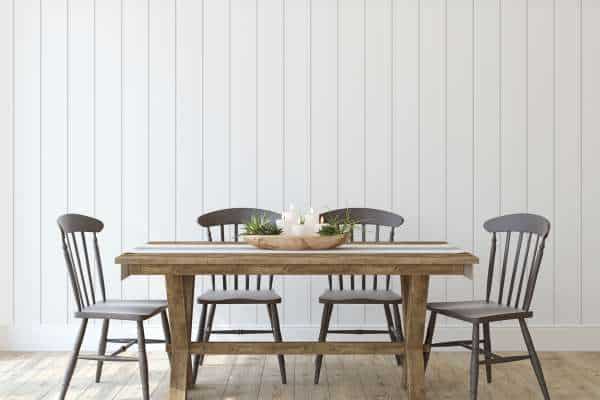
No two dining rooms are alike, and each shape presents its own set of challenges when it comes to spacing. In a rectangular room, you need to be mindful of the longer sides—keeping them too close to the walls can make the space feel claustrophobic. Square rooms, while offering more flexibility, can quickly become cramped if the table dominates the room. And for those uniquely shaped spaces, custom solutions like expandable tables or built-in benches can be lifesavers, allowing you to maximize every inch without sacrificing comfort.
How to Measure Space Around Your Dining Table
Getting the measurements proper is critical for a properly-balanced dining area. Start by using measuring your table, then upload the encouraged clearance on all sides. A on hand trick is to use painter’s tape to define the table and the encircling area on the ground. This visual manual enables you see how the very last setup will look and feature. It guarantees that there’s adequate room for chairs to move and for human beings to navigate without problems. This easy yet effective technique can make all the distinction in creating a dining space that works flawlessly for your own home.
Ensuring Enough Space for Chair Movement
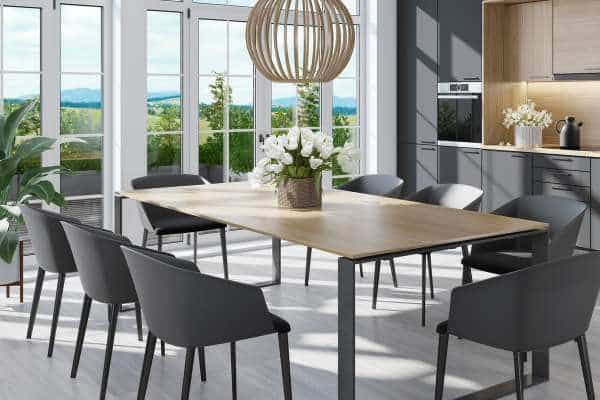
Chair motion is a element that’s often unnotice, however it’s vital for a clean eating revel in. Each chair must have as a minimum 24 inches of space at the back of it, allowing guests to drag out their chairs and take a seat down with none trouble. For a more spacious feel, particularly in larger rooms, keep in mind increasing this to 30 inches. This greater room doesn’t simply prevent bumps and scrapes—it makes the eating experience experience extra generous, giving every body room to loosen up and revel in their meal.
Allowing Space for Walking Around the Table
In homes where the dining area doubles as a passageway, walkable space is crucial. You’ll want to leave at least 36 inches for walkways around the table, ensuring easy access for everyone. In areas with heavier foot traffic, such as open-concept homes, increasing this to 42-48 inches helps maintain smooth movement and prevents bottlenecks. This additional space isn’t just about function—it adds to the overall flow and harmony of the room, making it a more pleasant place to dine and gather.
Accommodating Guests: Extra Space for Gatherings
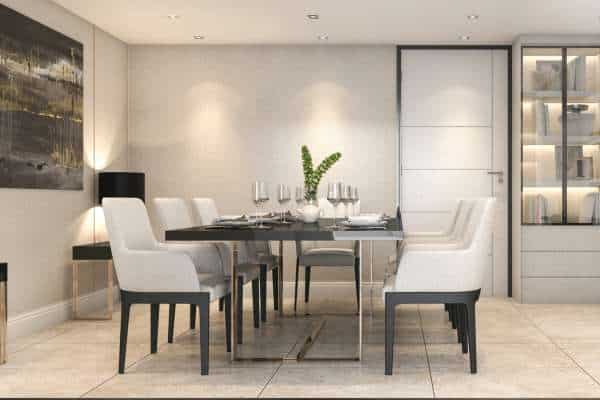
Hosting guests is when your dining space really needs to shine. During gatherings, having a little extra area can make all the difference. This might mean pulling out an extendable table or rearranging furniture to create more room. Ideally, your dining area should accommodate additional seating without feeling crowded. Ensuring that guests can move freely, even with more chairs around the table, is key to making everyone feel comfortable and welcome during meals and celebrations.
Creating a Balanced Look: Symmetry and Spacing
A dining room that looks as good as it functions requires a careful balance of symmetry and spacing. Aligning the table with the room’s features—like centering it under a light fixture—creates a visual harmony that enhances the entire space. Equal spacing around the table not only improves comfort but also contributes to the room’s aesthetic appeal. Whether you’re hosting a formal dinner or a casual family meal, this balance makes the dining room a place of both beauty and practicality.
Space Planning for Small Dining Areas
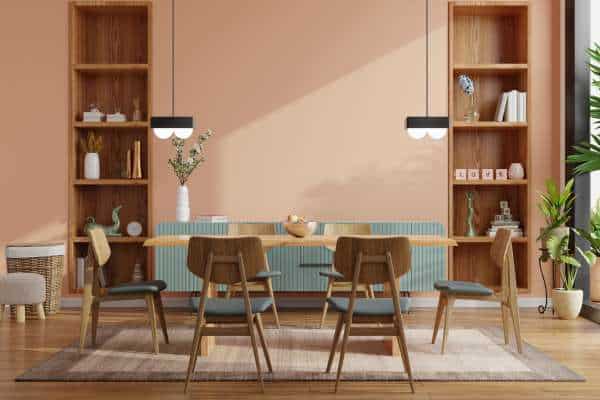
Small dining spaces can be just as charming and functional as larger ones with the right planning. Round or oval tables are perfect for tight spaces, as they take up less room and allow for easier movement. Built-in seating or minimalist furniture can also help maximize area. In these smaller areas, every inch counts, so thoughtful arrangement is key to creating a dining area that’s cozy yet comfortable, without feeling cramped.
Maximizing Space in Large Dining Rooms
Large eating rooms, even as imparting extra area, require cautious planning to avoid feeling too empty or cavernous. A grand eating desk can be a lovely focal factor, but it’s critical to balance it with complementary furniture, which includes sideboards or show cabinets. This allows fill the distance without overwhelming it, developing a cohesive and alluring ecosystem. In a large room, it’s all approximately making the gap feel complete and connected in preference to sparse and disconnected.
Common Mistakes to Avoid When Planning Dining Table Space
Planning the distance around your dining desk calls for interest to detail to keep away from not unusual pitfalls. One common mistake is not allowing sufficient room for chair motion, that could make seating cramped and uncomfortable. Another is underestimating the distance wished for walkways, main to awkward and cluttered layouts. Additionally, setting the desk too close to walls or other furniture can create a cramped feeling. Avoiding those errors guarantees a eating area that is both cushty and practical.
Using Rugs to Define Space Around Your Dining Table
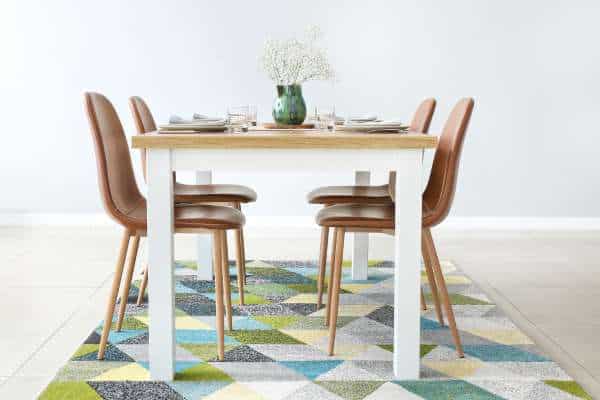
A well-chosen rug can do wonders for outlining the space round your dining desk, adding each consolation and style. Opt for a rug that extends as a minimum 24 inches past the desk’s side on all aspects. This ensures that chairs live at the rug even when pulled out, grounding the desk within the room and including a relaxed feel underfoot. The proper rug additionally enhances the room’s aesthetic, tying together the eating area with the relaxation of the gap.
Final Thoughts
The space around your dining desk is extra than just an afterthought—it’s a key element inside the average eating revel in. Whether you’re operating with a huge room or a extra compact region, ensuring there’s sufficient area for consolation, movement, and visible balance is critical. Thoughtful area making plans not only makes the eating experience more exciting but additionally elevates the room’s atmosphere, growing a welcoming surroundings wherein memories are made and shared. Prioritizing this area is an investment in each the capability and the splendor of your home.


